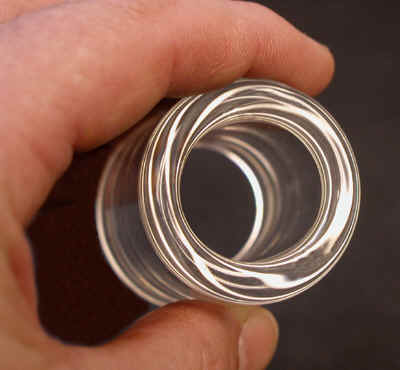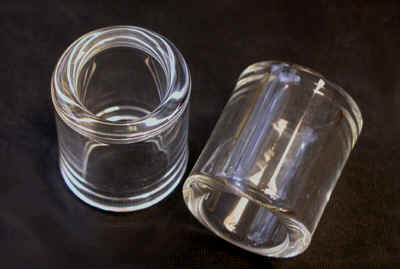Raschig Rings for Criticality Control (1980s)

These devices, known as Raschig Rings, are made of borosilicate glass. They are approximately 1 5/8" high and 1 1/2" in diameter, and their purpose is to prevent an accidental criticality by absorbing neutrons. To be specific, it is the boron-10 in the glass that absorbs the neutrons.
The rings would normally be used to fill a container that under accidental circumstances might contain a solution with enough Pu-239, U-235 or U-233 to go critical. Ideally, just the geometry (shape and size) of such a container would prevent a criticality, but mistakes happen and these solutions can end up in the wrong type of container. Raschig rings provide an additional level of safety. For example: an overflow tank from a floor drain in a room handling highly enriched U that should never receive enriched U but is filled with rings just in case.

The shape of the rings is such that it maximizes their surface area while maintaining the maximum free space in the container. Because the rings might settle out over time, a periodic inspection is performed to ensure that the rings are still packed to the top of the containers. In addition, a few rings are removed, perhaps once per year, and the boron content confirmed—over time, the B-10 content can be depleted due to neutron absorption. To prevent breakage, the glass is particularly hard.
Raschig rings predate the nuclear era and have many uses besides criticality control, packing distillation columns for example.
Donated by David Simpson.
References
- David Simpson, personal communication.
- ANS-8.5-1996. Use of Borosilicate-Glass Raschig Rings as a Neutron Absorber in Solutions of Fissile Material (Revision of ANSI/ANS-8.5-1986).
